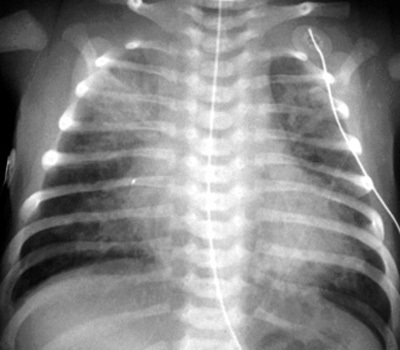Medical Respiratory Neonatal Distress

|
Meconium Aspiration Syndrome
Meconium staining of the amniotic fluid is relative common, affecting approximately 10% of live births, but only 1% will have meconium aspiration syndrome. The diagnosis is confirmed with visualization of meconium below the vocal cords. Because of the thick tenacious properties of meconium, aspiration into the tracheobronchial tree will result in significant respiratory compromise and can be complicated by persistent pulmonary hypertension. The child will usually be intubated and not infrequently extracorporeal membrane oxygenation is necessary. The mortality can approach 25% despite these supportive measures.
The radiology of meconium aspiration reflects the underlying pathophysiology. The aspirated meconium results in complete obstruction of the bronchi, resulting in atelectasis and compensatory hyperinflation of the remaining patent airways. Overall the lungs appear hyperinflated. Barotrauma is a frequent complication.
|
| | |
 |
|
CXR shows hyperinflation and patchy asymmetric airspace disease that is typical of meconium aspiration
|
| |
| | |


![]()
